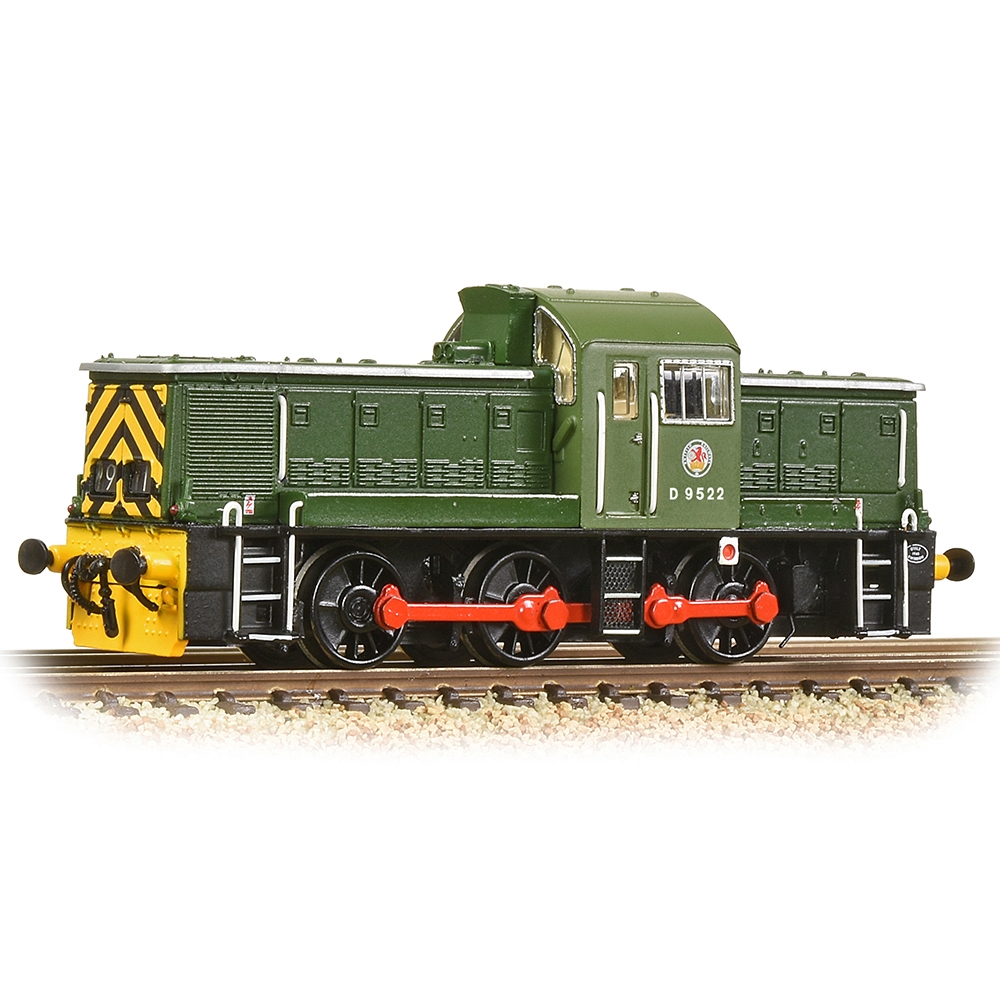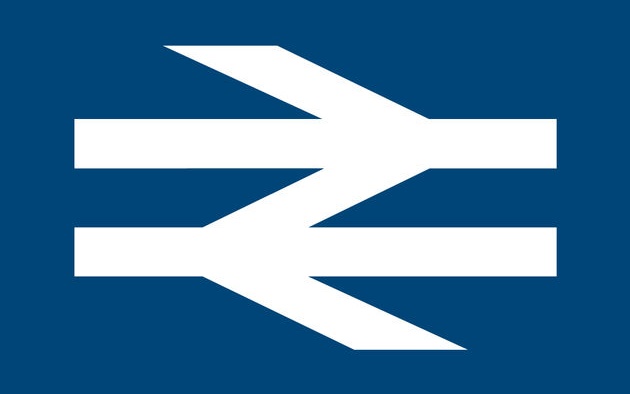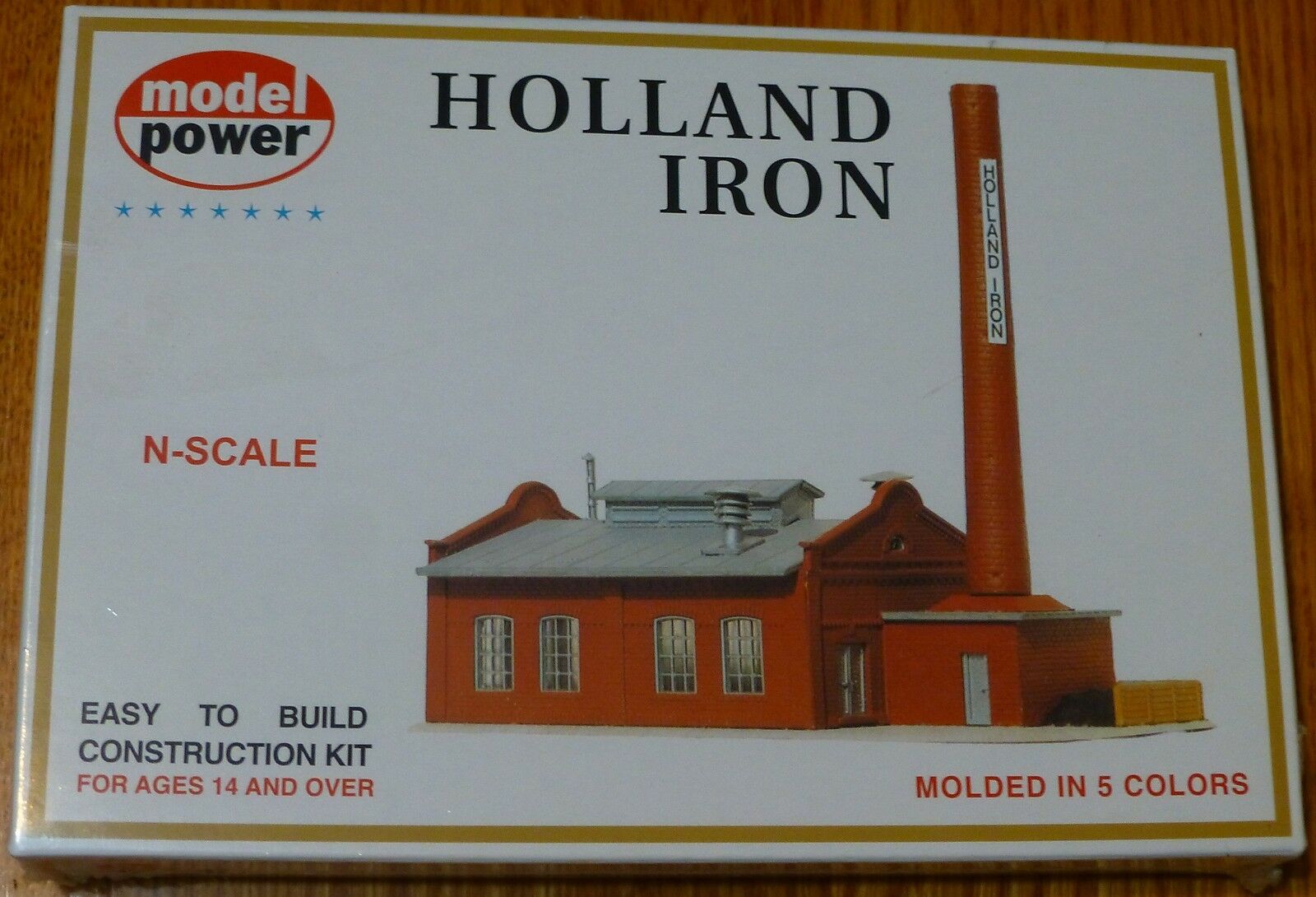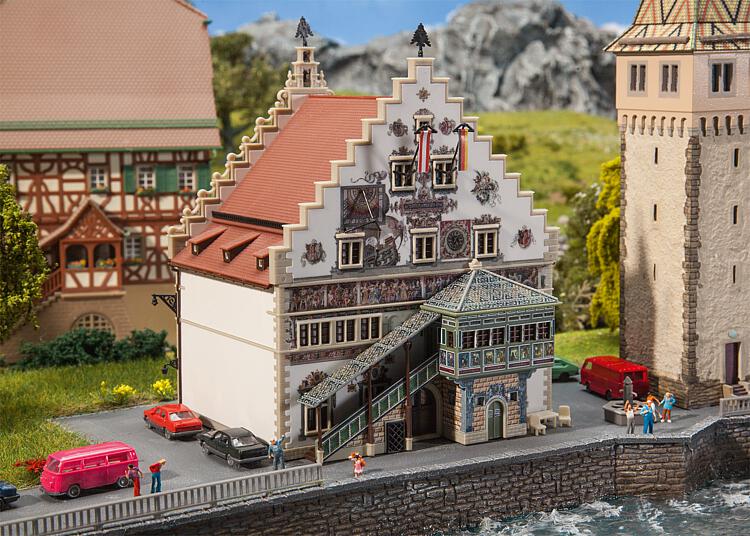Specific Item Information: The British Railways Class 14 is an 0-6-0 diesel-hydraulic locomotive built in the mid-1960s. Twenty-six of the locomotives were ordered in January 1963, to be built at Swindon Works. The anticipated work for this class was trip working movements between local yards and short-distance freight trains. The good all-around visibility from the cab and dual controls also made them capable of being used for shunting duties. The order was expanded from 26 to 56 in mid-1963, before work had started on the first order.
The class was numbered D9500-55 and later designated as TOPS Class 14 by British Railways. They are nicknamed 'Teddy Bears' following a comment by a Swindon Works foreman who commented "We've built The Great Bear, now we're going to build a 'Teddy Bear'!" Originally, all were allocated to Western Region depots, but in January 1967 twenty were sent to Hull (Dairycoates) in the Eastern Region of BR, followed by thirteen more later the same year. At Hull, they were intended for work around the docks, but the tasks were beyond the capabilities of a single locomotive, and since two locomotives required two crews, they were not popular with the region. In 1968, all 33 ER locomotives were placed in store, and were subsequently withdrawn on 1 April that year, joining their Western compatriots that had been progressively sidelined during 1967-68.
The Class 14s, like many other early types of diesel, had an extremely short life with British Railways, in this case not because of poor reliability but because many of its envisaged duties disappeared on the BR network a few years after they came into use. BR started to dispose of members of the class from mid 1968, the entire class had been sold to industry or otherwise disposed of by the end of 1970. In their new careers in industry many had a working life of two to three times greater than that with British Railways. The industries in which they were employed, such as coal mining, declined during the 1970s and the class again became surplus to requirements. Several have found a third lease of life on preserved lines where they are ideal for both light passenger work and the maintenance of permanent way. Some examples even found new uses during construction of the Channel Tunnel and High Speed One, some 3 decades after their conception! With such a versatile history, as it transpires, the Class 14 is a very useful and widely travelled loco type, universally popular with operators and enthusiasts alike.
The class was numbered D9500-55 and later designated as TOPS Class 14 by British Railways. They are nicknamed 'Teddy Bears' following a comment by a Swindon Works foreman who commented "We've built The Great Bear, now we're going to build a 'Teddy Bear'!" Originally, all were allocated to Western Region depots, but in January 1967 twenty were sent to Hull (Dairycoates) in the Eastern Region of BR, followed by thirteen more later the same year. At Hull, they were intended for work around the docks, but the tasks were beyond the capabilities of a single locomotive, and since two locomotives required two crews, they were not popular with the region. In 1968, all 33 ER locomotives were placed in store, and were subsequently withdrawn on 1 April that year, joining their Western compatriots that had been progressively sidelined during 1967-68.
The Class 14s, like many other early types of diesel, had an extremely short life with British Railways, in this case not because of poor reliability but because many of its envisaged duties disappeared on the BR network a few years after they came into use. BR started to dispose of members of the class from mid 1968, the entire class had been sold to industry or otherwise disposed of by the end of 1970. In their new careers in industry many had a working life of two to three times greater than that with British Railways. The industries in which they were employed, such as coal mining, declined during the 1970s and the class again became surplus to requirements. Several have found a third lease of life on preserved lines where they are ideal for both light passenger work and the maintenance of permanent way. Some examples even found new uses during construction of the Channel Tunnel and High Speed One, some 3 decades after their conception! With such a versatile history, as it transpires, the Class 14 is a very useful and widely travelled loco type, universally popular with operators and enthusiasts alike.
Road Name History: British Railways (BR), which from 1965 traded as British Rail, was the state-owned company that operated most of the overground rail transport in Great Britain between 1948 and 1997. It was formed from the nationalisation of the "Big Four" British railway companies and lasted until the gradual privatisation of British Rail, in stages between 1994 and 1997. Originally a trading brand of the Railway Executive of the British Transport Commission, it became an independent statutory corporation in 1962 designated as the British Railways Board.
British Rail designed and manufactured rolling stock from 1948 to 1989, at which time its subsidiary British Rail Engineering Limited (BREL) was privatised.
1997 marked the end of the privatization effort in which the last assets of British Rail were sold to 31 regional freight and passenger operators as well as Railtrack (which was later brought under public control as Network Rail), which was given the track and infrastructure.
Read more on Wikipedia.
British Rail designed and manufactured rolling stock from 1948 to 1989, at which time its subsidiary British Rail Engineering Limited (BREL) was privatised.
1997 marked the end of the privatization effort in which the last assets of British Rail were sold to 31 regional freight and passenger operators as well as Railtrack (which was later brought under public control as Network Rail), which was given the track and infrastructure.
Read more on Wikipedia.
Brand/Importer Information: Graham Farish is a British brand of N gauge model trains, that belongs to Bachmann Europe.
The company entered the model train business in the early 1950s, focusing on British OO gauge rolling stock, track and accessories.
In the 1970s, it started to produce N gauge models under the GRAFAR label. After the withdrawal of Lima and Minitrix from the UK market in the late 1980s, Graham Farish was the only major supplier of British outline models in N gauge, soon withdrawing from the OO scale market.
In 2001, Graham Farish was purchased by Kader Industries of Hong Kong, and absorbed by its subsidiary Bachmann Industries. Bachmann immediately closed the British manufacturing facility and moved production to China.
Bachmann have since increased the size of the Farish range, by duplicating models introduced to the Bachmann OO range; often, an OO scale Bachmann Branchline model is followed between 6 months to a year later by an N gauge Graham Farish model.
The company entered the model train business in the early 1950s, focusing on British OO gauge rolling stock, track and accessories.
In the 1970s, it started to produce N gauge models under the GRAFAR label. After the withdrawal of Lima and Minitrix from the UK market in the late 1980s, Graham Farish was the only major supplier of British outline models in N gauge, soon withdrawing from the OO scale market.
In 2001, Graham Farish was purchased by Kader Industries of Hong Kong, and absorbed by its subsidiary Bachmann Industries. Bachmann immediately closed the British manufacturing facility and moved production to China.
Bachmann have since increased the size of the Farish range, by duplicating models introduced to the Bachmann OO range; often, an OO scale Bachmann Branchline model is followed between 6 months to a year later by an N gauge Graham Farish model.
Manufacturer Information: Bachmann, a US company founded in 1835, was purchased by Kader Industries in 1987. Kader formed Bachmann Industries Europe in 1989 with their main UK headquarters in Moat Way, Barwell, Leicestershire, UK (former Palitoy location) and the following year launched the Bachmann Branchline range for the British market with the moulds that had previously been used for the Palitoy Mainline and Replica Railways model railway products. From this starting point Bachmann has developed the range further and now produce a large range of models.
In 2001 Bachmann Branchline bought Graham Farish, an N gauge manufacturer, and since then many of their models have been made available in both gauges.
Bachmann Europe portfolio also comprises other model trains brands such as Liliput.
In 2001 Bachmann Branchline bought Graham Farish, an N gauge manufacturer, and since then many of their models have been made available in both gauges.
Bachmann Europe portfolio also comprises other model trains brands such as Liliput.
Item created by: CNW400 on 2022-03-18 15:17:52
If you see errors or missing data in this entry, please feel free to log in and edit it. Anyone with a Gmail account can log in instantly.
If you see errors or missing data in this entry, please feel free to log in and edit it. Anyone with a Gmail account can log in instantly.










